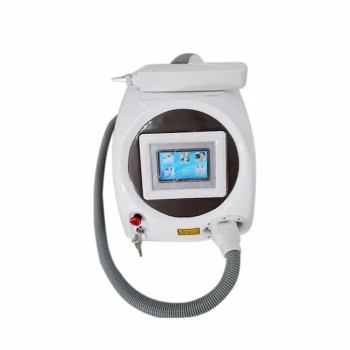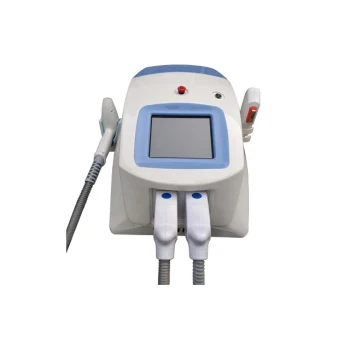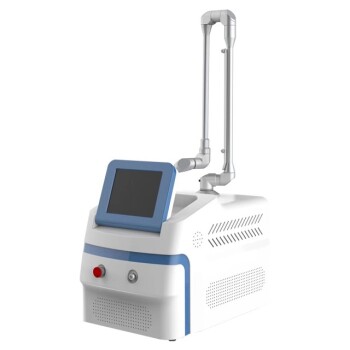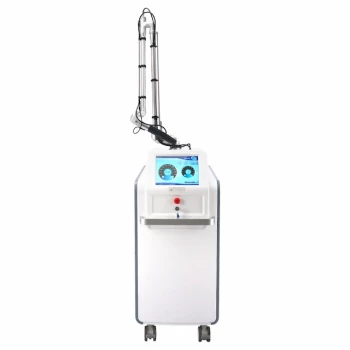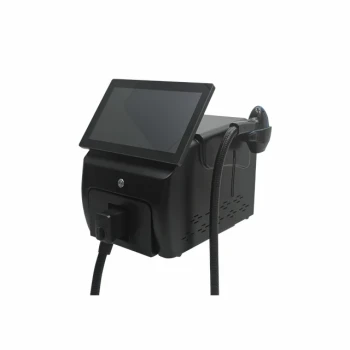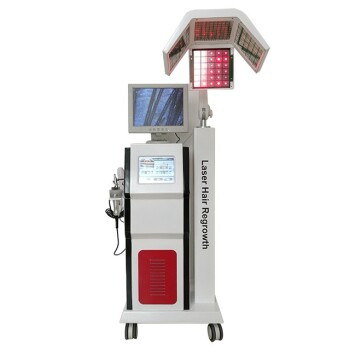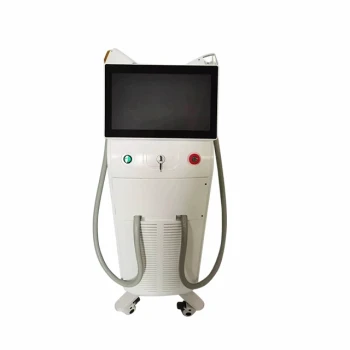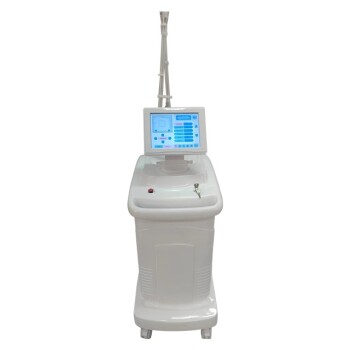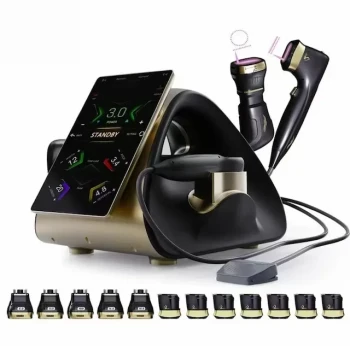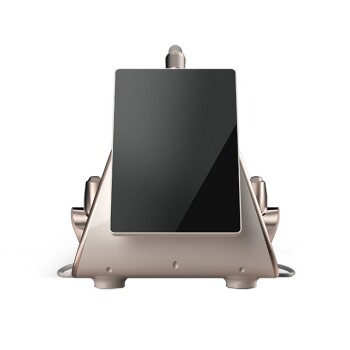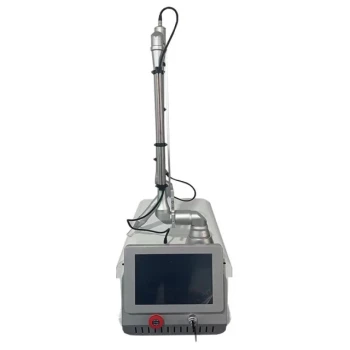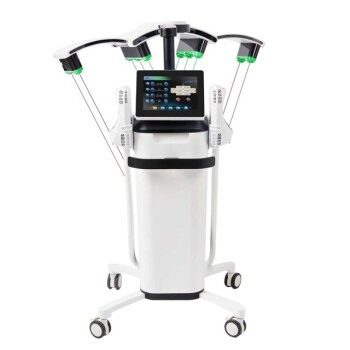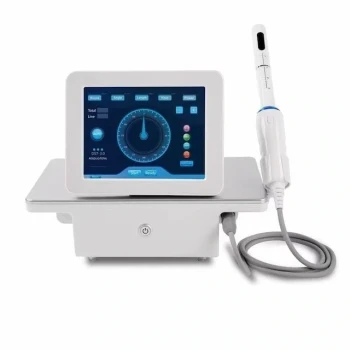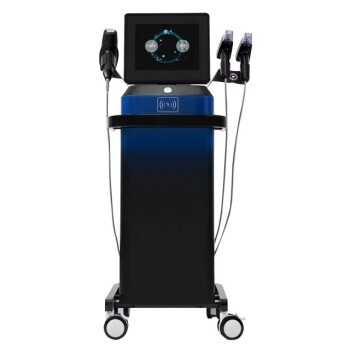At its core, an Nd:YAG laser works by using a man-made crystal as a medium to generate a powerful, focused beam of infrared light. An external energy source, like a flash lamp, "pumps" energy into a Neodymium-doped Yttrium Aluminum Garnet (Nd:YAG) rod. This excites the neodymium atoms, which then release their energy as photons of light at a specific 1064nm wavelength, creating the laser beam.
The fundamental advantage of the Nd:YAG laser is its 1064nm wavelength. This specific type of infrared light is not readily absorbed by surface skin tissue, allowing it to penetrate deeply and deliver targeted energy to structures like blood vessels or hair follicles without damaging the overlying skin.
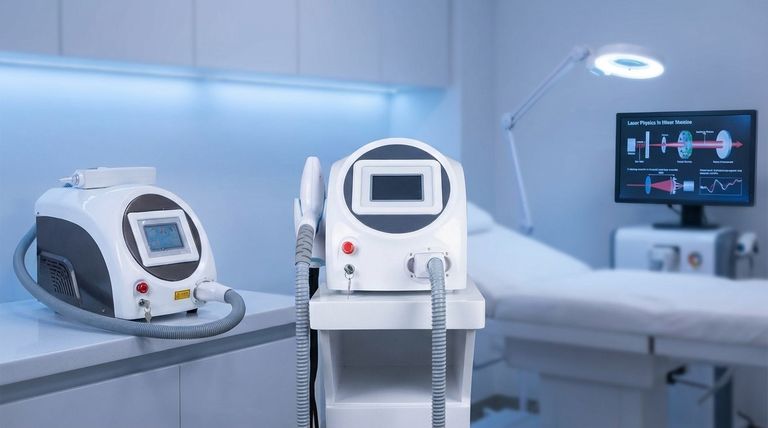
The Core Components and Mechanism
An Nd:YAG laser's operation relies on three critical components working in perfect harmony to create and amplify light.
The Lasing Medium: The Nd:YAG Crystal
The heart of the laser is the Nd:YAG crystal. This is a synthetic crystal of Yttrium Aluminum Garnet (YAG) that has been intentionally "doped" with a small amount of Neodymium (Nd) ions.
The YAG crystal provides a stable, durable host structure. The neodymium ions are the active element responsible for producing the light.
The Pumping Source: The Energy Input
To start the lasing process, energy must be pumped into the crystal. This is typically done with a high-intensity flash lamp or, in more modern systems, a set of laser diodes.
This external energy excites the electrons within the neodymium atoms, pushing them into a higher, unstable energy state. This process is known as population inversion.
The Optical Resonator: The Amplifier
The Nd:YAG crystal is placed between two highly reflective mirrors that form an optical cavity, or resonator. One mirror is fully reflective, while the other is partially reflective.
This setup is crucial for amplifying the light. Photons released by the neodymium atoms bounce back and forth between these mirrors, passing through the crystal repeatedly.
The Physics of Light Emission
The process of generating the laser beam can be understood as a precise, four-step sequence.
Step 1: Excitation
The pumping source floods the Nd:YAG crystal with energy, causing the neodymium atoms' electrons to jump to a high-energy state.
Step 2: Stimulated Emission
As the excited electrons naturally drop back to a more stable energy level, they release their excess energy in the form of photons. When one of these photons passes by another excited atom, it stimulates that atom to release an identical photon.
This stimulated emission is the core of laser action. The new photon matches the original in wavelength, phase, and direction, creating coherent light.
Step 3: Amplification
The two mirrors of the optical resonator trap these photons, forcing a cascade of stimulated emission. This chain reaction amplifies the light's intensity exponentially with each pass through the crystal.
Step 4: Beam Creation
A powerful, concentrated beam of coherent infrared light builds up within the resonator. A portion of this beam escapes through the partially reflective mirror, forming the usable laser output at the specific 1064nm wavelength dictated by the energy transition of the neodymium ions.
Understanding the Trade-offs and Operating Modes
The Nd:YAG laser is not a one-size-fits-all tool. Its behavior is modified for different applications, primarily through controlling its energy delivery.
Pulsed vs. Continuous Wave
The reference mentions "long pulses." This is a key operating mode. Medical lasers often use a pulsed mode to deliver high energy in short bursts, allowing the skin to cool between pulses and minimizing collateral damage.
Industrial applications like welding might use a continuous wave (CW) mode, which provides a constant, uninterrupted beam of energy.
Q-Switching for Peak Power
For applications like tattoo removal, a technique called Q-switching is used. This method allows energy to build up to an extreme level within the crystal before being released in an ultra-short (nanosecond) pulse.
This creates extraordinarily high peak power, which is necessary to shatter ink particles mechanically rather than just heating them.
The Risk of Deep Penetration
The laser's greatest strength—its ability to penetrate deeply—is also a potential risk. In inexperienced hands, the 1064nm wavelength can deliver too much heat to subcutaneous tissue, causing unwanted damage. Proper calibration and skin cooling are critical for safety.
Making the Right Choice for Your Goal
The specific configuration of an Nd:YAG laser determines its ideal use case.
- If your primary focus is deep vascular lesions or hair removal: A long-pulsed Nd:YAG is the correct tool, as its 1064nm wavelength can penetrate deep into the dermis to target hemoglobin and melanin.
- If your primary focus is tattoo removal: A Q-switched Nd:YAG is essential to generate the massive peak power needed to fracture pigment particles.
- If your primary focus is precise industrial cutting or welding: A continuous wave (CW) Nd:YAG provides the sustained, stable energy required for material processing.
Ultimately, the Nd:YAG laser's power lies in the predictable physics of its crystal, which generates a uniquely penetrating wavelength of light that can be precisely controlled for a vast range of tasks.
Summary Table:
| Key Aspect | Description |
|---|---|
| Core Mechanism | A crystal (Nd:YAG) is energized to emit a specific 1064nm infrared light beam. |
| Key Wavelength | 1064nm, allowing deep penetration with minimal surface skin damage. |
| Primary Medical Uses | Hair removal, treating vascular lesions, tattoo removal. |
| Key Operating Modes | Long-pulsed (for hair/vessels), Q-switched (for tattoos). |
Ready to integrate the precision of professional Nd:YAG technology into your practice?
BELIS specializes in advanced medical aesthetic equipment, providing medical aesthetics clinics and premium beauty salons with the reliable, high-performance technology needed to deliver superior client results. From powerful hair removal systems to versatile multi-application platforms, our solutions are designed for efficacy and safety.
Contact our experts today to discuss how our Nd:YAG lasers can enhance your service offerings and grow your business.
Visual Guide
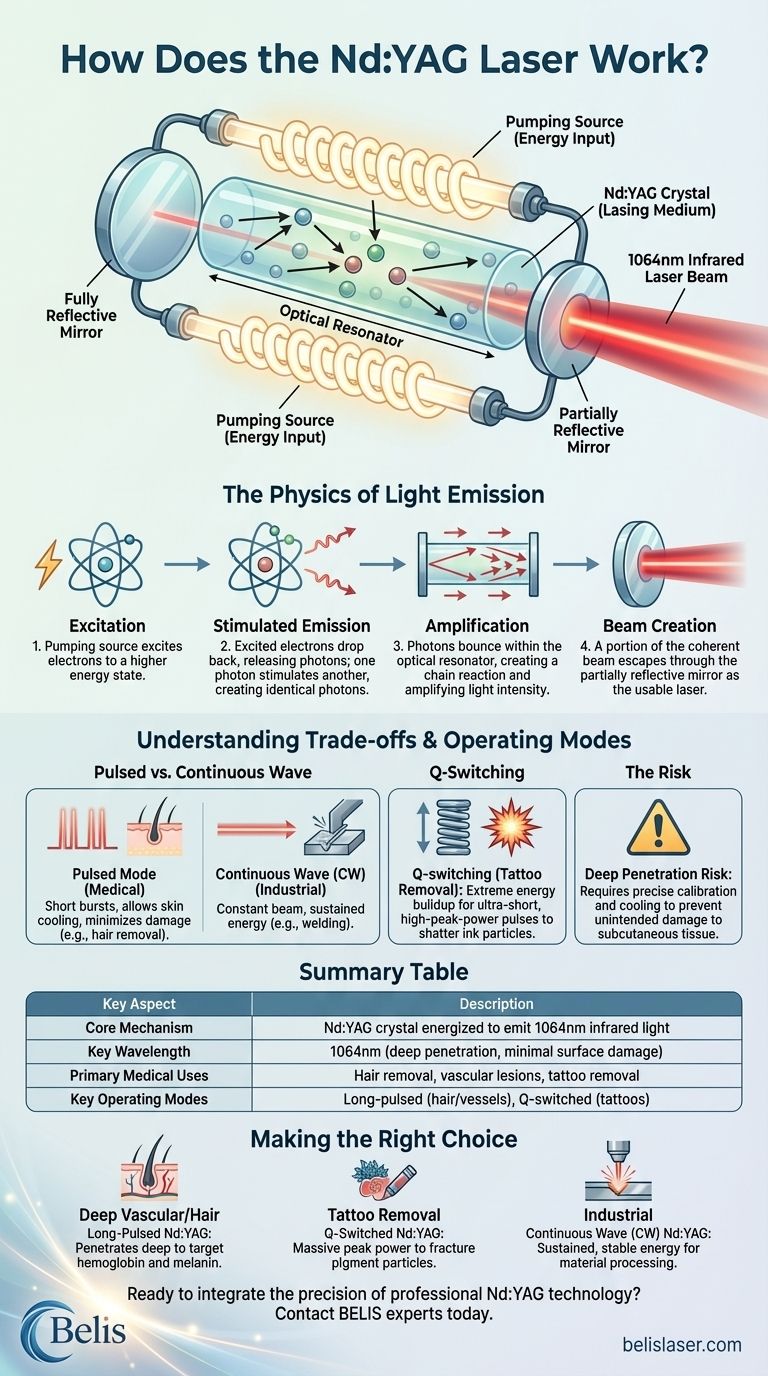
Related Products
- Q Switch Nd Yag Laser Machine Tattoo Removal Nd Yag Machine
- Clinic Use IPL and SHR Hair Removal Machine with Nd Yag Laser Tattoo Removal
- Pico Picosecond Laser Machine for Tattoo Removal Picosure Pico Laser
- Pico Laser Tattoo Removal Machine Picosure Picosecond Laser Machine
- Diode Laser SHR Trilaser Hair Removal Machine for Clinic Use
People Also Ask
- What are Q-switched lasers commonly used for? Remove Tattoos & Pigment with Precision
- Is Q Switched Nd:YAG laser good? The Gold Standard for Tattoo & Pigment Removal
- How long does it take to recover from Nd:YAG laser treatment? A Timeline for Every Procedure
- Is Q-Switch laser safe for skin? Achieve Precise, Non-Invasive Skin Rejuvenation Safely
- What is the mechanism of action of the YAG laser? Precision Cutting & Deep Tissue Coagulation
